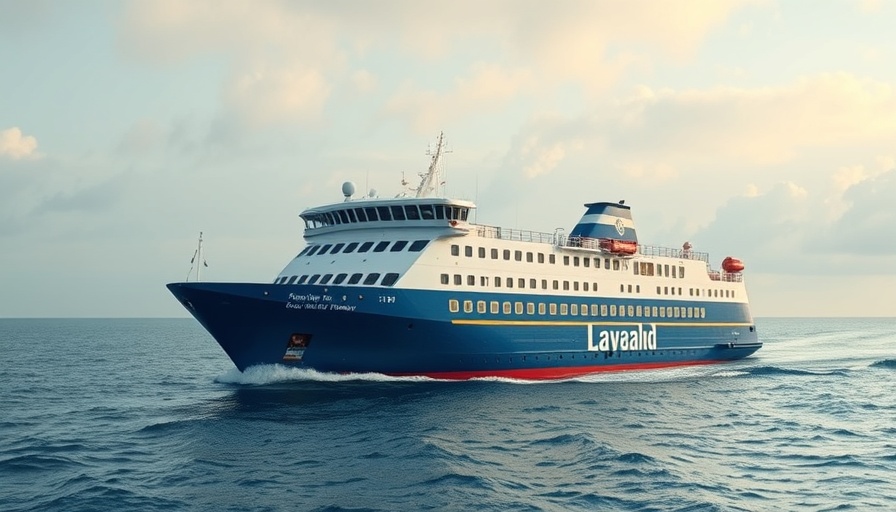
Revolutionizing Ferry Transportation with Advanced Hybrid Technology
The maritime landscape is on the brink of a green revolution, exemplified by Wärtsilä's recent integration of a major battery extension for the Wasaline ferry, Aurora Botnia. Set to make waves as the world’s largest marine battery hybrid system, this project is not merely an engineering feat; it represents a significant stride towards sustainable ferry transportation. With battery capacity increasing from 2.2 MWh to 12.6 MWh, we are looking at a transformative shift in how ferries can minimize their carbon footprint.
Why Battery Extensions Matter for Sustainable Maritime Journeys
As global emphasis on sustainability intensifies, hybrid propulsion systems have emerged as essential tools in the fight against greenhouse gas emissions. The Aurora Botnia, already operating with biogas and dual-fuel engines, exemplifies this evolution by adopting a solution that enhances its energy efficiency. This extension isn't just about power; it's about redefining our approach to sea transportation, where eco-friendliness is no longer optional but essential.
The Role of Technology in Reducing Emissions
Wärtsilä's integration will deliver not only the necessary battery upgrade but also an Energy Management System designed to optimize performance. These systems are crucial as they not only manage energy consumption but also facilitate the reduction of emissions, signaling a future where technology and environmental responsibility coexist harmoniously. The advancements in hybrid technology at Wärtsilä present opportunities for other maritime operators to take similar strides.
A Model for Future Ferry Operations
Set against the backdrop of regular operations between Vaasa, Finland, and Umeå, Sweden, the Aurora Botnia isn't just a vessel; it's a floating test lab for Wärtsilä's Sustainable Technology Hub. This partnership represents an innovative model where data collected can be leveraged to further improve hybrid technologies, demonstrating how collaboration can lead to shared progress in sustainability.
Predicting Future Trends in Marine Battery Systems
As this battery extension project is set to commission in early 2026, one must wonder how quickly the maritime industry will adopt similar technologies. The success of this initiative is likely to inspire more operators to invest in sustainable practices, pushing for larger battery systems across various vessels. Companies around the globe will need to evaluate the potential advantages of integrating advanced hybrid technologies not just to comply with regulations but as a business imperative, embracing greener alternatives.
Counterarguments: Balancing Innovation with Operational Costs
However, as with any rapid technological advancement, there are costs to consider. Critics might argue that the financial outlay required for significant upgrades like those planned for the Aurora Botnia can be daunting, especially for smaller operators. Balancing the immediate capital investment against long-term operational savings and environmental impact will be a critical debate in the maritime sector moving forward.
Conclusions: The Shift Towards Sustainable Solutions
The Aurora Botnia stands as a testament to what can be achieved when innovation meets necessity. Its journey towards enhanced battery capacity is not just a feat of engineering but a beacon of hope for a more sustainable maritime future. As Wärtsilä boldly navigates these waters, it is clear that the future of ferry operations is not only about efficiency but also about responsibility toward our planet. For those in the industry, the takeaway is evident: adaptation and foresight will be crucial components for survival in an increasingly eco-conscious world.
 Add Row
Add Row  Add
Add 




Write A Comment